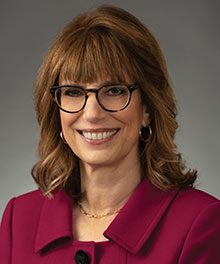Carolyn Mazzenga, Tax & Business Partner, Quoted in Long Island Business News Article – Prepping for spiking assisted living costs
Long Island Business News
By Ambrose Clancy

Excerpt:
The goal of living with comfort and dignity in our final years has been shaken by some rude economic information.
The MetLife Mature Market Institute reported recently that assisted living costs spiked last year by 5.2 percent over 2009, outpacing both inflation and the interest earned on savings and bonds.
Nationally it costs about $3,300 a month to live in an assisted living facility, but on Long Island, like so many other things, the price is steeper. Residing in a quality facility here will run $4,000 a month or more, according to Robert Bornstein, a professor of psychology at Hofstra and co-author, with Mary Languirand, of “When Someone You Love Needs Nursing Home, Assisted Living, or In-Home Care.”
“Contrary to popular belief, most assisted living costs, as well as the costs of skilled nursing care, are not covered by Medicare,” Bornstein said. “That’s $50,000 a year, out of pocket.”
Many people will be scrambling to meet these costs, since demographically the numbers of those needing professional care in their old age will rise dramatically. According to the U.S. Census Bureau, within ten years the number of Americans between the ages of 65 and 84 will rise by 40 percent. The AARP reported recently that the growth rate of the assisted living facility industry slowed in 2009 to about 1 percent, but the industry is projected to maintain an annual growth rate of more than 4 percent through 2014.
What strategies can be used to afford the rising costs that will secure a relatively comfortable end of life passage?
Carolyn Mazzenga, partner in charge of family wealth services for Marcum, the Melville accounting firm, said the first step is to get real. “The level of services one needs in an assisted living facility dictates the price to be paid,” Mazzenga said. “No matter the initial price, the elderly find that as time goes on they make additional demands on the facility and the price escalates.”
The second step is not to make any move at all. One way to control the situation without it controlling you is to hold off placing a loved one in a facility as long as reasonably possible, Mazzenga said. Using technology to help aged loved ones can extend their time at home where they are most comfortable. The use of webcam monitoring and alert systems such as alarm pendants, and a dedicated emergency telephone are ways to spare the costs of a full service facility.
Waiting as long as possible helps emotionally as well as financially, Bornstein said. “When a loved one enters assisted living, significant emotional challenges arise alongside financial challenges,” he said. “This can be even more difficult when a partner, as opposed to a parent, must receive out-of-home care. If two or more siblings are making joint decisions about a parent’s care the potential for conflict is significant.”
Once the decision is made to make a move, it might be too late if plans haven’t been made early on. Long term insurance is one way to go and should be investigated as early as possible, Mazzenga advised.
Bornstein agreed, adding that simple savings can help “To anticipate services you might need in the future, create a savings account to cover these costs,” he said. “But you must treat this money as sacred and not to be borrowed against for every day expenses or luxuries.”
Do your homework, Mazzenga said, by exploring charity and nonprofit facilities such as those developed by religious organizations or community welfare groups. If the elderly person is a veteran, contact the U.S. Department of Veteran Affairs and discuss all options.
Once a loved one is residing in the facility, the partner or children must remain an active participant in their care. This is, of course, essential emotionally, but will help financially as well, Mazzenga said. “Monitor the level of care and the true needs of the patient to avoid unnecessary services that are not required or could be provided at a lower cost,” Mazzenga said.
Also, reverse mortgages should be looked into if only one partner is moving to an assisted care facility.
Even though residents in these facilities average stays of just 28 months, according to the National Center for Assisted Living, costs can break those unprepared.
“It’s important to plan ahead, save for or insure against these costs,” Mazzenga said.



















